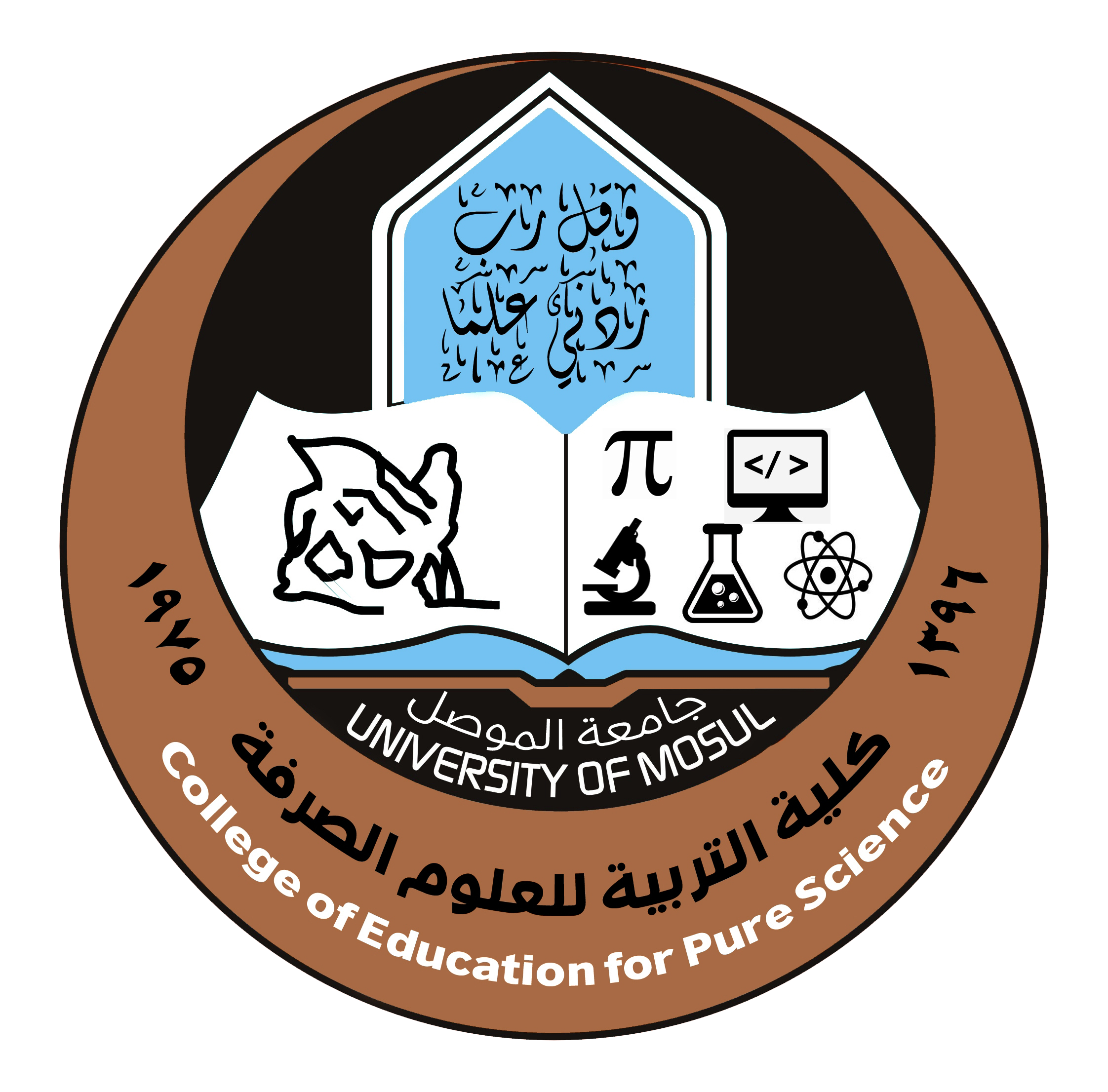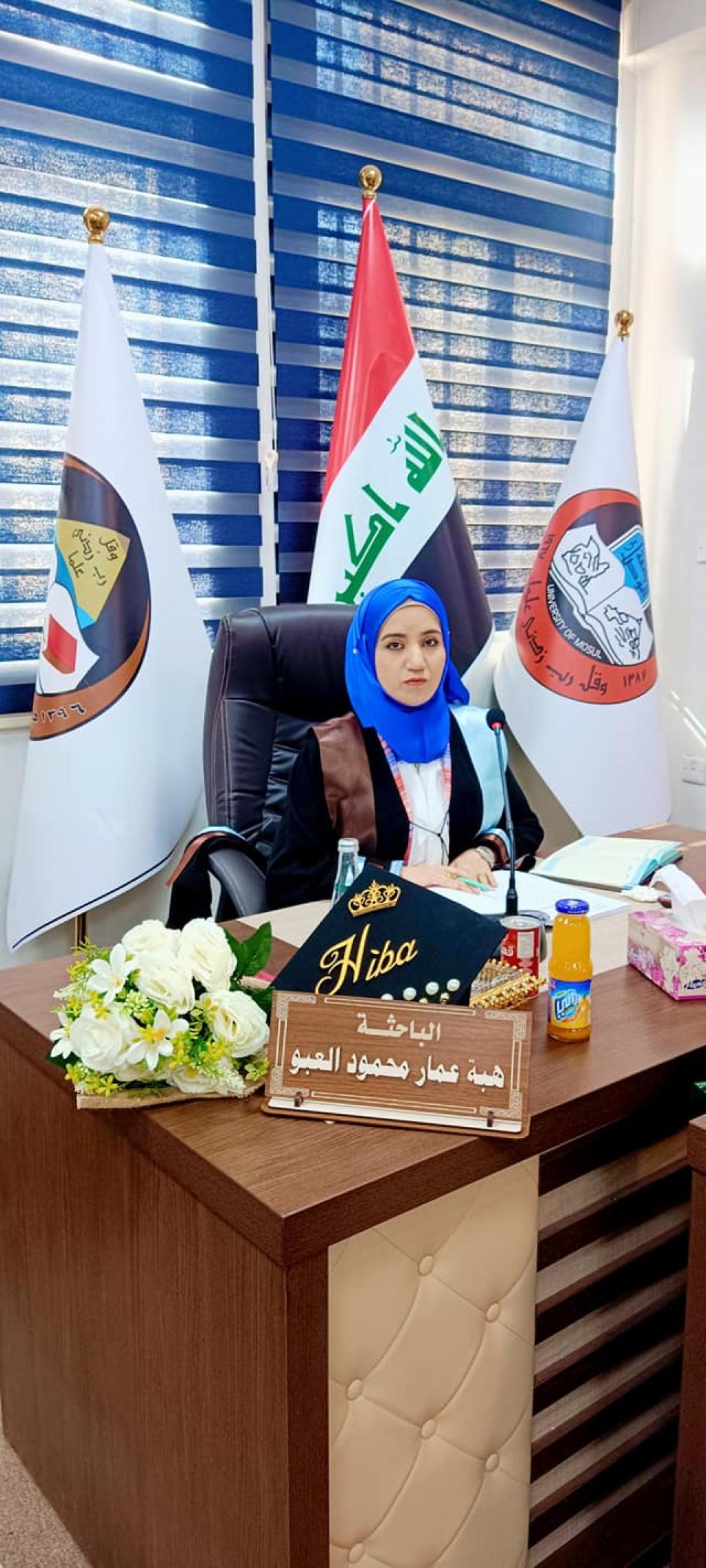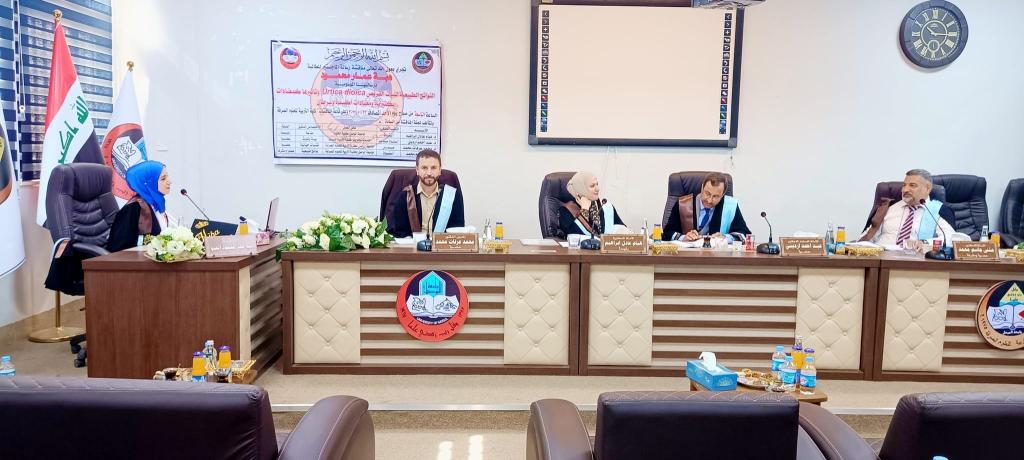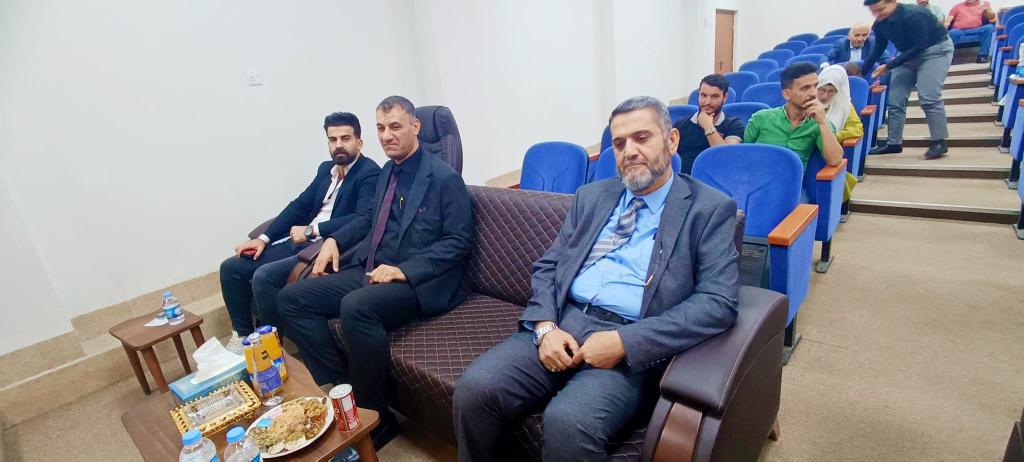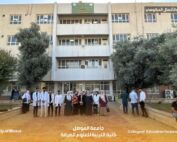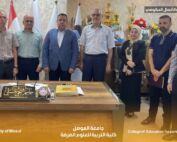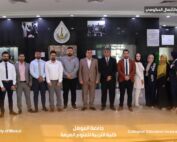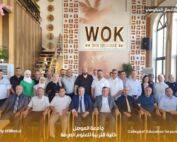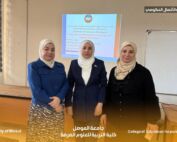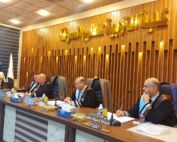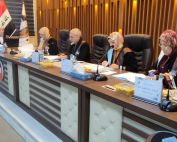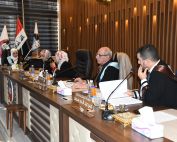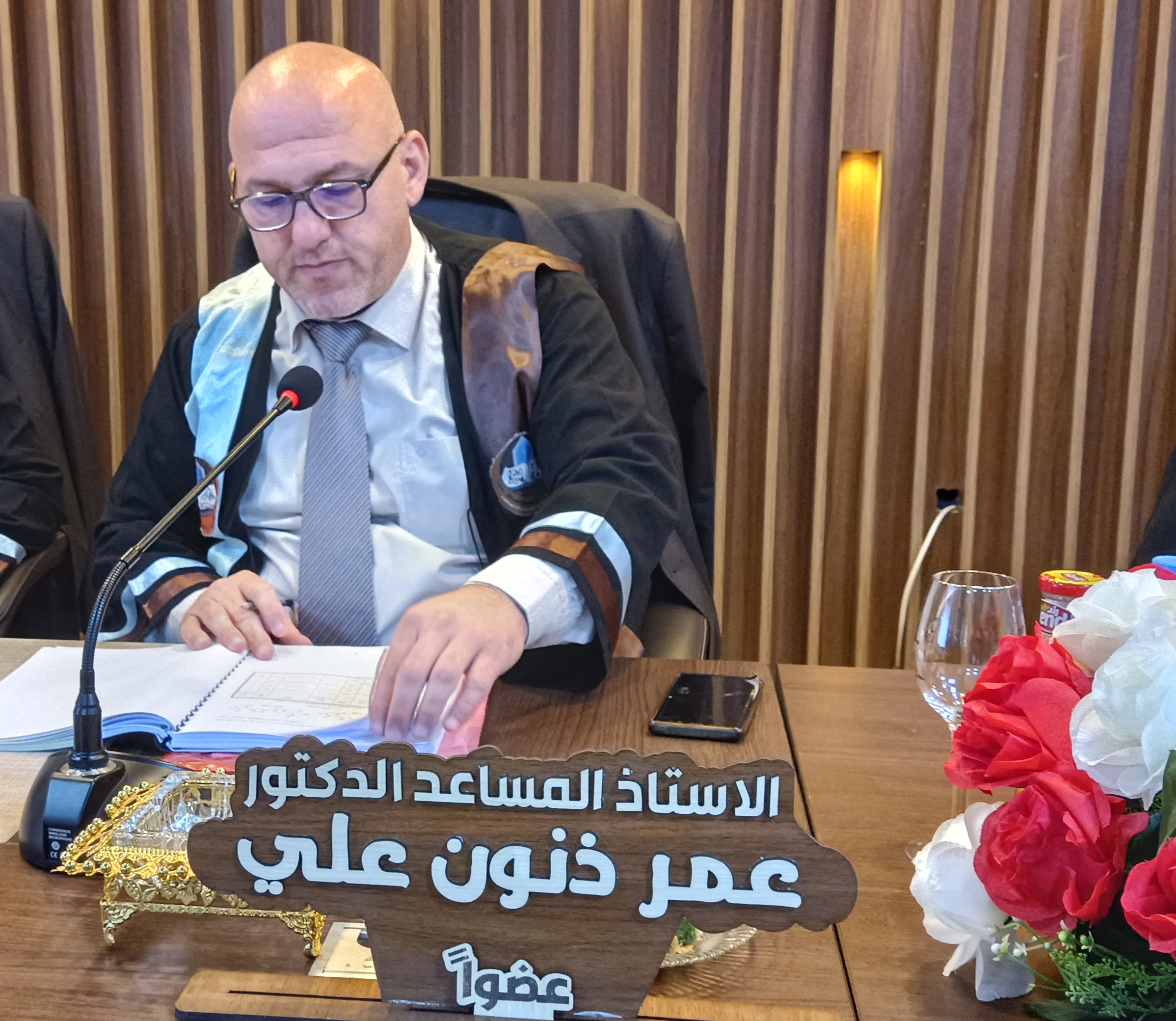23 October، 2022
Master Thesis Viva-Biology Department

Master Thesis Viva in the College of Education for Pure Science entitled “The Natural Products of the Urtica dioica and Their effects as Antibacterial, Antioxidant and Anticancer “The College of Education for Pure Science, University of Mosul, has done the Master Thesis Viva entitled ” The Natural Products of the Urtica dioica and Their effects as Antibacterial, Antioxidant and Anticancer “,On Sunday, October 23, 2022, the respected Dean of the College, Assistant Professor Dr. Qais Ismail Ibrahim, the Honorable Scientific Associate and Administrative Associate, the Honorable Head of the Department of Biology, and a number of the college’s teachers were attended the viva. In this study, presented by the M.Sc. Student Heba Ammar Mahmood ALAboo in the Department of Biology, There were two axes. The first axis involves using various chromatography techniques to separate and identify the active compounds in Urtica dioica leaves. In Dohuk City, the plants were gathered. Operations involving extraction and separation were conducted at the Natural Products Laboratory/Department of Biology/College of Education for Pure Sciences, University of Mosul. The extraction was carried out using a continuous extraction apparatus (Soxholet) by following the successive solvent system (hexane, ethyl acetate, ethanol), and the compounds were separated and identified using chromatography methods (CC, TLC, GC-MS, and HPLC). A variety of fatty acids were separated and identified using the technique of GC-MS as palmatic acid, behenic acid, stearic acid, pentadecanoic acid, and myrestic acid, and the identification of phenolic compounds using HPLC technology was separated, as coumaric acid was identified in Part I and vanillic acid and quercetin were identified in Part II.Regarding the second axis, the biological effectiveness of the compounds isolated from the U. dioica plant against pathogenic bacteria, oxidation, and cancer was assessed. The results showed that these compounds had an inhibitory effect on the pathogenic bacteria used under study compared to antibiotics, as the highest diameter of inhibition of fatty acids reached 29 mm in Salmonella typhi at a concentration of 200 mg/ml, while the phenolic compounds diagnosed in part I showed an inhibitory effect of 18 mm on Pseudomonas aeruginosa bacteria at the same concentration, while the compounds diagnosed in part II showed an inhibitory effect of 16 mm on P. aeruginosa bacteria at the same concentration.The results of the MTT cytotoxicity test on the liver cancer cell line HepG2 were compared to those of the cell line WRL68, which represents normal cells. The highest inhibition of coumaric acid identified in Part I was 72.3% at a concentration of 400 g/ml, while it did not show a high toxic effect on WRL68 normal cells. This was followed by the phenolic compounds identified in Part II, where the percentage of inhibition reached 68.21% and gave the lowest inhibition percentage on WRL68 normal cells, while fatty acids showed less effectiveness, as the percentage of inhibition reached 60.65% at the above concentration and did not show a high toxic effect on normal cells.According to the information presented above, U. dioica contains natural compounds that have antibacterial, antioxidant, and anti-cancer properties. The Viva committee was chaired by Prof. Dr. Hyam adel Ibrahim University Of Mosul College Of Science and the membership of Asst. Prof. Dr. Abd ahmed erdeny University of Tikrit / College of Education for Girls, Lecturer Dr. Muhammad Arafat Muhammad University of Mosul / College of Education for Pure Science and under the supervision and membership of Prof. Dr. Mouthana Jasim ALtaee / University of Mosul / College of Education for Pure Science.
